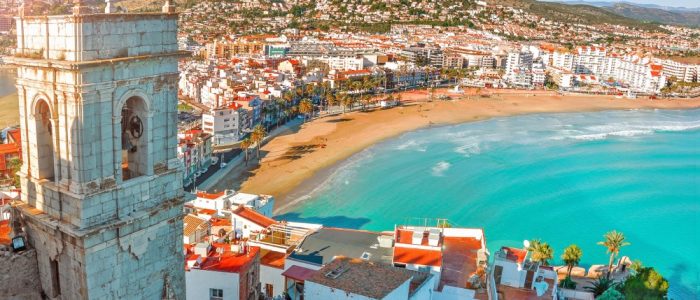Do you have a scheduled visit to Valencia and want to make the most of your visit to the city? Organizing a trip to Spain and considering Valencia as one of your destinations? What to see and what to do in Valencia to feel that we have not missed anything?
Valencia stands out for having many of the things that attract tourists to Spain. All in the same place. A city with a historic center, a labyrinth of small streets and spectacular medieval buildings like La Lonja de la Seda.
Valencia is located to the right of the Mediterranean Sea, which allows you to enjoy extensive and beautiful beaches, as well as enjoy a unique cuisine based on the sea. It is the mecca of paella, the Spanish dish par excellence. But there is also space for leisure and culture. Culture such as that offered by the City of Arts and Sciences, which make Valencia an extraordinarily attractive place.
To make it easier for you, we will tell you what are some of the essential points of your visit to Valencia.
The City of Arts and Sciences
It is difficult to go through Valencia without going through the City of Arts and Sciences. The flagship attraction assembles ultra-modern structures that give it an ethereal quality by reflecting its amazing areas with water.
The entire project began in the mid-1990s, with construction beginning in 2005. Inside these infrastructures we can find cultural places and first-class attractions for families, such as L'Hemisfèric, a planetarium and the IMAX cinema. It also has the imposing L'Umbracle: a complete botanical collection of native plants of Valencia.
Oceanogràfic
In the City of Arts and Sciences we can find one of the most avant-garde oceanariums inaugurated since 2003. More than 45,000 animals of more than 500 different species come together in this unique attraction throughout Europe.
Organized into ten areas, each of which synthesizes a unique environment, using seawater pumped directly from the coast, so it is common to witness beluga whales swimming in carefully designed tanks.
The Silk Exchange
This distinguished building dates from the late 15th century and is a site considered by UNESCO as a work of Gothic architecture in Valencia. La Loja de la Seda has been an emblem of the city since the golden age, when the city was one of the most important centers of European commerce and culture.
Its name is due to the fact that it was the space where Mediterranean merchants met to carry out their exchanges. Inside, delicate columns are displayed in the main room and the incredible details of its vaulted ceilings are admired. Its crenellated outline is visible from the central market of the city.
Valencia Cathedral
The city's cathedral, in a solemn Gothic style, dates from the 13th and 14th centuries, with Renaissance, Baroque and Neoclassical modifications made over the next several hundred years. Inside there are 15th century Renaissance paintings by Valencian artists, such as Jacomart, and several from Rome, commissioned by Pope Alexander VI.
But its most beautiful and controversial aspect is the Chapel of the Holy Chalice. On this altar is one of the few chalices that Jesus used to institute the Holy Eucharist at the Last Supper.
As you can see, Valencia offers a wide assortment of activities and monuments that have everything that makes the city an obligatory worthy destination on your way through Spain. Financing problems? In the market there are excellent offer of personal loans for travel.



